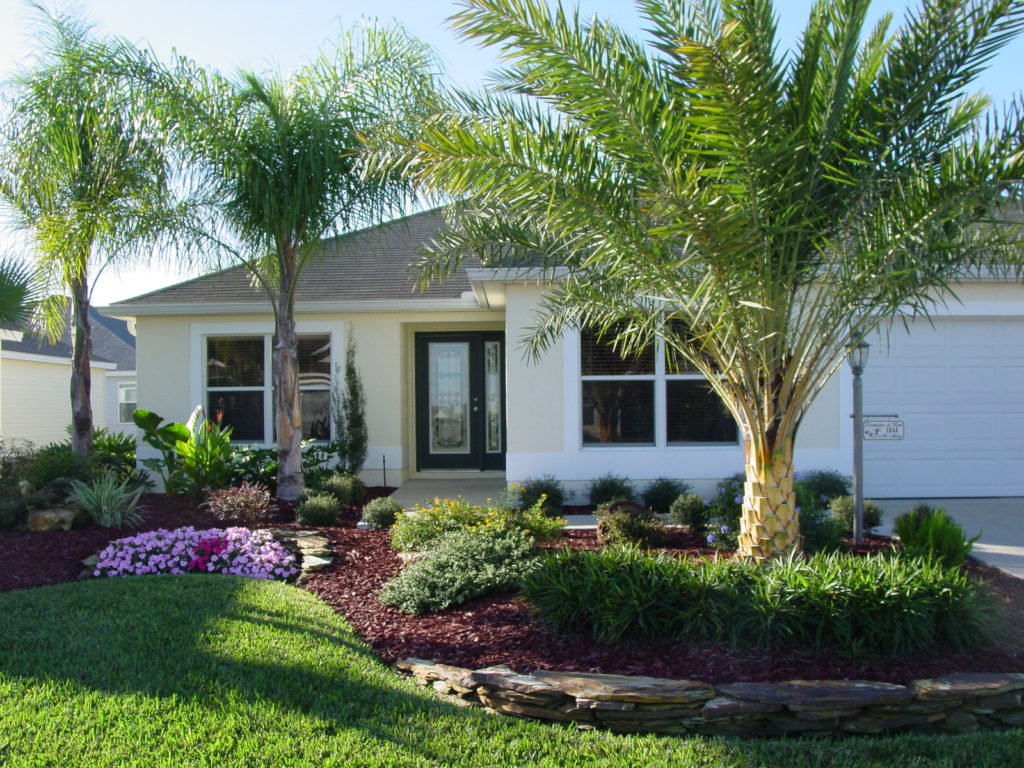 As far as home improvements go, landscaping is a solid investment – in fact, a well designed outdoor project can offer a better return than most of those inside the house. Good landscaping can add between 7 and 15 percent value to your property and has a recovery value of 100 to 200 percent, so shell out now and get it back when you sell.
As far as home improvements go, landscaping is a solid investment – in fact, a well designed outdoor project can offer a better return than most of those inside the house. Good landscaping can add between 7 and 15 percent value to your property and has a recovery value of 100 to 200 percent, so shell out now and get it back when you sell.
Many investors will tell you that a well-designed landscape will help you sell your property faster. With today’s explosion of subdivisions, where many of the properties look similar from the outside, landscaping can set your property apart from a neighborhood of clones.
But the key to a profitable landscape is the design, so start with a plan. A poorly designed layout could end up costing you more time and money: without proper planning, that lovely deck you’ve laid may crack in next winter’s frost. So before you go running into the yard with your pick and shovel, get out your paper and pencil.
First, consider what you want to use the area for. If you want to have an outdoor kitchen area or pool then your design will look quite different from someone looking for a vegetable garden or a private refuge. There are plenty of garden magazines on the market; study them to get a good idea of what you like and don’t like. Even if you aren’t planning on doing the whole yard now, plan what you’d like to see eventually. Otherwise, you may find yourself ripping up this year’s hard work because it interferes with next year’s project.
Plan for your level of maintenance. Think about whether you want a garden that requires a lot of work or something a little easier to deal with. After you put all this work into the design you don’t want to watch it go to waste. If you don’t have time to maintain it yourself you might want to hire someone to take care of it for you but look into those costs before you start planting.
Which brings us to the ever-popular topic of budgets – it’s important to start out with an idea of how much you have to spend because it’s easy to get carried away out there and there’s no shortage of lovely plants, features, and furniture to sink your hard-earned cash into. Be realistic: you might not be able to put in both the pool and the outdoor kitchen this year, but you’ve got your plan. You know it’s coming.
The next step is to sketch out your yard. Divide it into sections and map out what you would like where. Call your utility company and map areas with underground wires and pipes. Identify areas that have special needs (drainage issues, acidic soil, shade and full sun). Next, add the features that need to be “hardscaped,” like patios, fences, fountains, pools, and walkways. Depending on the complexity of your design you may want to consider involving a professional, at least to look at your design. If you are undertaking any structural projects it might be wise to have the plans vetted by an engineer. In any case, consult local building codes and do your research. You want to ensure that your hardscaping is appropriate for your particular location and climate concerns.
When deciding on plants, refer back to your sketch to match your greenery with its preferred light and soil conditions. Use marking paint or chalk to mark out planned features and bedding areas in your yard. This will give you a basic idea of whether your design works spatially. You may need to play with the width of the beds or paths to make the plan more visually appealing.
Before you plant, lay your plants out in their place and take a good look. Does the layout look crowded? Try to visualize the final size of the plant. Make sure you leave them enough room, even if your garden feels a little sparse to begin with. It’s better to have a little room between them now rather than ending up with some plants being overpowered by others when they are full-grown.
And now you’re ready to go! It may seem like a lot of work to get started, but a well-planned design will ensure that you maximize your investment and create a beautiful space that you (or the next owners) will enjoy for years to come.
Bill Manassero is the founder/top dog at “The Old Dawg’s REI Network,” a blog, newsletter, and podcast for seniors and retirees, that teaches the art of real estate investing. His personal real estate investing goal, which will be chronicled at olddawgsreinetwork.com, is to own/control 1,000 units/doors in the next 6 years. Prior to that, Bill and his family lived in Haiti for 11 years as missionaries serving orphaned, abandoned and at-risk children.
